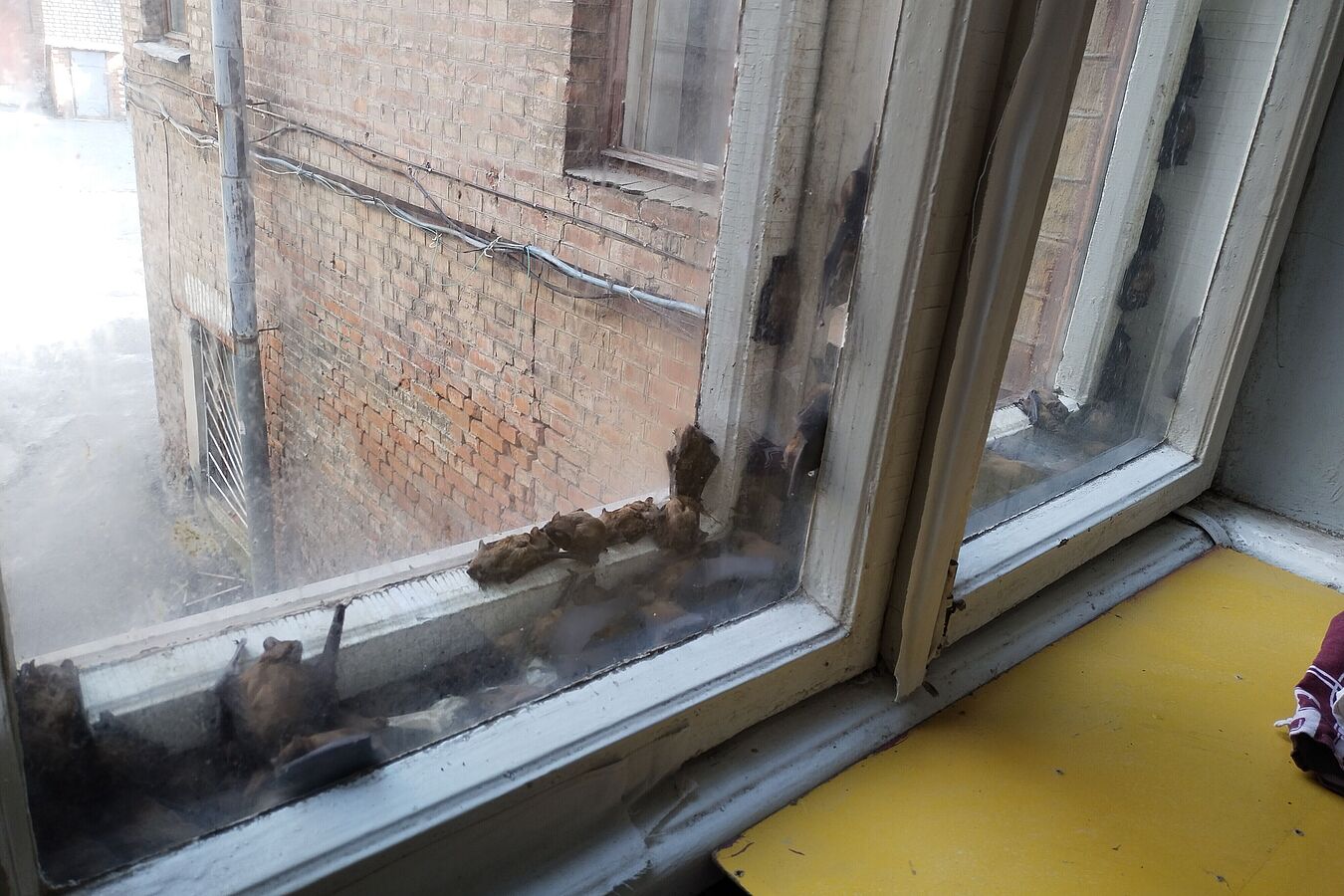Scientists from the Ukrainian Bat Rehabilitation Center recently examined the effects of war-related damages to buildings on urban populations of one important and widespread bat species, the Common Noctule (Nyctalus noctula), in the city of Kharkiv in north-eastern Ukraine. They showed that many buildings used by bats as roosts have been destroyed and approximately 7,000 bats were killed. In addition, partially destroyed buildings have become a death trap for bats, resulting in several thousand more victims. The findings are published in the “Journal of Applied Animal Ethics Research”.
The mission of the Ukrainian Bat Rehabilitation Center (UBRC) is to protect, rescue and conduct long-term research on bats, with the Kharkiv region as the focus of their efforts. Kharkiv is Ukraine’s second largest city and one of the places where conflicts between Ukrainian and Russian forces have been most intense to date. UBRC director Dr Anton Vlaschenko, who is also affiliated with the Berlin-based Leibniz Institute for Zoo and Wildlife Research (Leibniz-IZW), says: “Our findings suggest that 45.1% of buildings used as wintering roosts for Common Noctules were either partially damaged or completely destroyed by shellings, which may have led to the direct killing of approximately 7,000 bats.” Additionally, the war-damaged urban environment in Kharkiv has become a deadly trap for the bats during the period of autumn migration or swarming. “Bats entered the interiors of buildings through windows that were left open or broken by blast waves, resulting in entrapment,” says former Leibniz-IZW PhD student Dr Kseniia Kravchenko from the UBRC.
Windows left open by people and/or were broken by blast waves are a notable threat for migratory bats that enter the building and get trapped inside the apartments or between window frames. Some of the windows in the city are of an old double-glazed type – two frames with a space between them – and the bats end up trapped in the middle. “The issue has been known to occur in Kharkiv since the 1960s, but the war exacerbates the problem by creating ever more human-made traps for bats,” reports Vlaschenko . Before the war, UBRC scientists used to rescue up to 500 bats from such windows during the autumn bat migration. Owing to the war, the number of cases of bats trapped in partially damaged buildings and/or abandoned apartments was three times higher than in previous years. Almost all of them were Common Noctules. The team reports that they discovered 2,836 Common Noctules trapped inside buildings damaged by shelling and that approximately 30 percent of them were already dead upon discovery. Noctules flies in groups and these groups can get lost in urban structures. The size of trapped groups was clearly larger than in previous years, especially in the districts of the city most damaged by the ongoing war such as Saltivka,” says Kravchenko. During the first weeks of the full-scale war (February–March 2022) alone, almost half of the buildings known as winter roosts of Common Noctules were partially (31.4%) or fully (13.7%) damaged by Russian shelling, which may have led to the direct killing of thousands of bats.
The number of bats present in Kharkiv in 2022 was exceptional high, as Common Noctules stayed in the Kharkiv city area all autumn. The scientists also found that these bats had a larger body mass than usual. These changes might have been a consequence of the destruction of street lights and power plants in Kharkiv and most of the settlements in Ukraine since the beginning of the war. The absence of artificial light might result in more bats entering the city, as this removed any “light barrier” for nocturnal animals and facilitated a rapid recovery of night-active insect populations.
“The war created many new challenges in our lives and to those of bats, but we don’t lose focus on our mission to protect wildlife and exploit the current context to learn as much as we can on our favourite animals”, concludes Vlaschenko. The war has indeed made their working condition extremely difficult, but the team of the Ukrainian Bat Rehabilitation Center remains very active and continues to save bats, gather data, run workshops and collaborate with many scientists and institutes in Ukraine and beyond, such as with the Leibniz-IZW.


